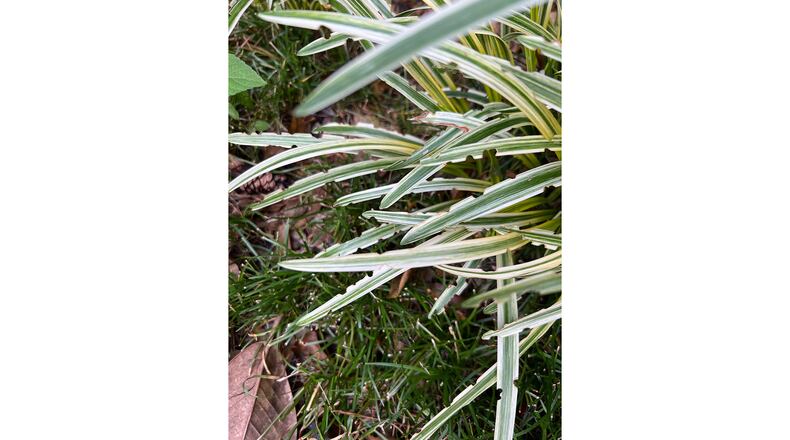Q: Last year, most of the leaves of my liriope had small notches along both sides. What do you think this is? How can I solve it for this year? Bill Katschilo, email
A: I think black vine weevil is the culprit. The adult insect makes characteristic notches on the leaves of rhododendron, azalea and euonymus, as well as other herbaceous plants. The larvae do more damage by feeding on the roots of these plants. The best control is a drench of systemic insecticide like imidacloprid.
Q: On our condominium property, a homeowner is complaining of something dripping onto her car from trees. There is a red maple and a pine tree nearby. Could both of these trees be the culprit? We really don’t want to take down a healthy maple. Rebecca Donovan, Dunwoody
A: Liquid dripping from trees is not usually from the tree itself. It is probably undigested plant sap (honeydew) excreted by insects that feed on the tree. Sometimes, the honeydew flow will be so heavy that everything underneath the maple is shiny. At some point, it will become covered with black sooty mold so that needles and leaves under the tree will be black. In such cases, controlling the insects will solve the problem. The most effective insecticide for this is imidacloprid. It is poured on the soil around the base of a tree and taken up to the leaves, where it kills any sap-sucking insects. Read and follow the directions, and do not use when the tree is blooming.
Q: Is your advice for applying crabgrass preemergent still March 1 considering the early warmup in temperature this year? Virginia Bales, Hamilton County, Tennessee
A: You have probably heard there is a new USDA map that shows that winters have not been as severe in the past 20 years and that spring has come earlier. Despite this, the timing of preemergent application will still be based on your own intuition and observations. Gardeners have observed that you should apply preemergent when the forsythia shrubs in your neighborhood are blooming. The flower buds open in response to the same temperature signals that weed seeds do. There is a whole body of knowledge called phenology in which the defined behavior of certain plants is used to tell you when to do garden tasks. Keep your eye out for the bright yellow flowers of forsythia, and your application of weed preventer will be timed perfectly.
Email Walter at georgiagardener@yahoo.com. Listen to his occasional garden comments on “Green and Growing with Ashley Frasca” Saturday mornings on 95.5 WSB. Visit his website, walterreeves.com, or join his Facebook page at bit.ly/georgiagardener for his latest tips.
About the Author
The Latest
Featured

